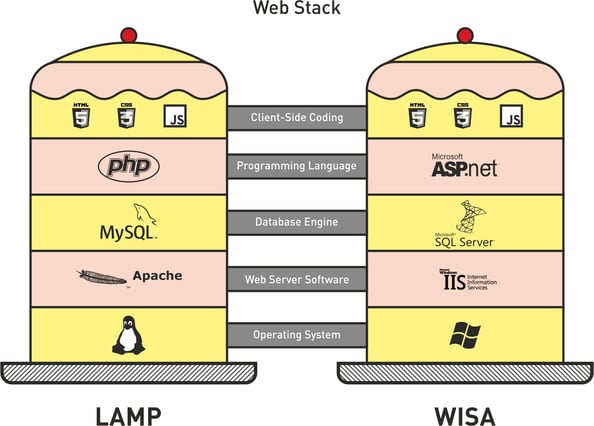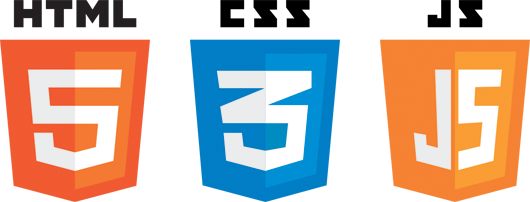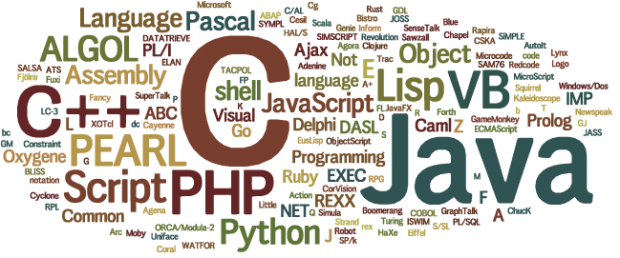Present day sites are constructed utilizing a bunch of innovations. While you don't need to be a specialist in these frameworks to deal with your site venture legitimately, it is a smart thought to acquaint yourself with the nuts and bolts of the accessible advances and their upsides and downsides keeping in mind the end goal to comprehend the long haul affect they will have on your site. There is no single "right innovation" for building sites. Many variables ought to be a piece of your choice, for example, your seller's understanding, merchant's aggregate group abilities, advancement and authorizing costs, and additionally your association's inside rules, site execution, practicality, simplicity of versatility for development and that's just the beginning. You ought not force a particular innovation on your engineer, particularly on the off chance that it isn't their first specialized topic. Your web designer should issue a proposal with a clarification regarding why the innovation they suggest is the best decision for you. In the meantime, picking the wrong innovation or the web designer with inadequate involvement in the innovation can add up to a noteworthy cost. With a specific end goal to maintain a strategic distance from exorbitant errors, make sure that the accompanying is valid before you set out on the venture:
- You completely comprehend the decision of innovation and its long haul suggestions on your site. For instance, does it represent any constraints or require extra authorizing costs?
- Your web designer is genuinely a specialist in the innovation decided for the task.
The accompanying will enable you to explore the ocean of current innovations utilized as a part of web advancement:
Website is A Cake of Many Layers
Before choosing which innovation is ideal for your site, it is basic that you see all building squares of a site. You can think about an advanced site as a cake that has numerous layers. Each layer speaks to a specific innovation. Every "innovation layer" has its own particular capacity and reason. Pick them carefully and you have an incredible tasting cake. Pick inadequately, and your item will be unappetizing. The accompanying are a portion of the "layers" you should know:

Customer Side Coding HTML (Hypertext Markup Language), CSS (Cascading Style Sheets) and JavaScript are basic segments to your site. They are as vital to your site as sugar is to your cake. You can't manufacture an advanced site without these parts, and your web engineer must be a specialist in each of the three. What do they do? To place things in basic terms: HTML is a dialect that makes up the substance of your site and tells your program (like Internet Explorer or Google Chrome) what to appear on the site. CSS is a dialect used to portray the introduction (the look and organizing) of your site, and it advises your program what to appear on your site. JavaScript is a programming dialect generally used to make intuitive impacts inside web programs. These are customer side advances. Customer side implies that when you go to a site, your program downloads HTML, CSS and JavaScript. By then your program renders (or procedures) HTML and CSS and executes (or runs) JavaScript. This occurs on your PC; hence, these advancements are customer side. You may know about other customer side advances like Ajax or jQuery, which are regularly techniques or libraries to extend and improve JavaScript capacities. Another customer side innovation is Flash. Streak is one customer side innovation that ought to be kept away from. Adobe Flash was utilized generally to make movements and intelligent encounters. It has been supplanted with HTML5/CSS3 - new forms that have worked in help for usefulness that was some time ago just conceivable with Flash. The greatest issue with Flash is that it isn't bolstered by iOS (Apple's working framework) so parts of your site written in Flash won't deal with iPhones or iPads. At long last, Flash is likewise not SEO agreeable.
Another customer side innovation is Flash. Streak is one customer side innovation that ought to be kept away from. Adobe Flash was utilized generally to make movements and intelligent encounters. It has been supplanted with HTML5/CSS3 - new forms that have worked in help for usefulness that was some time ago just conceivable with Flash. The greatest issue with Flash is that it isn't bolstered by iOS (Apple's working framework) so parts of your site written in Flash won't deal with iPhones or iPads. At long last, Flash is likewise not SEO agreeable.
Programming Language:
The rest of the innovation layers that make up your site are server-side, implying that they live and work on the server. Keeping in mind the end goal to program business rationale or custom usefulness on your site, web designers utilize programming dialects. There are numerous, however the most widely recognized ones are "the best four": PHP, ASP .NET, Java and Ruby. You may have known about the less normal or more established dialects like Perl, ColdFusion, C/C++ or Python. What programming dialect should your web engineer use for your site? For whatever length of time that you have unlimited access to the source code, I would surrender it over to them. My exclusive proposal is that you stick to one of "the best four". This will make it less demanding to move to another web designer. Just to give you a thought, beneath is the breakdown of programming dialects utilized as a part of the world's most mainstream sites (take note of that most utilize more than one, so I am posting the essential dialects as it were):
What programming dialect should your web engineer use for your site? For whatever length of time that you have unlimited access to the source code, I would surrender it over to them. My exclusive proposal is that you stick to one of "the best four". This will make it less demanding to move to another web designer. Just to give you a thought, beneath is the breakdown of programming dialects utilized as a part of the world's most mainstream sites (take note of that most utilize more than one, so I am posting the essential dialects as it were):
| PHP | Facebook, Yahoo, Google, Wikipedia, WordPress |
| ASP.NET | Live, MSN.com, Bing |
| Java | Amazon, eBay, LinkedIn, YouTube |
| Ruby |
Framework / Platform:
A structure (now and then alluded to as a stage) is the following "layer" in your site. You can consider it Lego® pieces making up your site. Basically, a structure is a gathering of libraries of streamlined and field-tried code that give building pieces you can use to develop a site. They permit reusing code from basic capacities without "rethinking the wheel". Odds are, your web designer has a structure or stage that they utilize regularly, and I would prescribe that you leave this decision to them. Simply make certain that the structure/stage is one that other web engineers will have the capacity to work with in the event that you should need to move to another web accomplice. Most current complex sites depend on structures since they make web improvement additional time-and savvy. They routinely have pre-composed answers for the vast majority of the capacities and highlights generally utilized on sites. Probably the most widely recognized structures for programming dialects are recorded underneath:
| PHP | Zend, Yii, Symphony, CodeIgniter, Cake PHP |
| ASP.NET | C# |
| Java | Spring/Hibernate, Struts, Tapestry, Scala |
| Ruby | Rails, Sinatra |
Database Engine
A database motor or database server is the basic segment of your site where your whole site's information is put away. This is the place your site will store all the data, for example, items, orders, exchanges, client records, and so forth. You may be astounded to discover that most CMS (Content Management Systems) utilize databases to store even the substance of the site. Truly, this implies even content on your site might be put away in the database also. The decision of the database motor to a great extent relies upon different elements, for example, the programming dialect/structure, web server, and so forth. The most widely recognized databases for web designers are MySQL, Microsoft SQL Server, Oracle and Postgres. The decision is for the most part reliant on alternate innovations secured underneath. If it's not too much trouble note, MySQL and Postgres are by and large "free" (open source) database motors, while Microsoft SQL and Oracle require licenses that can be costly.
Web Server Software
The term web server can allude to either the equipment (the physical PC) or the product (the PC application) that conveys your site to the end client. Since we are discussing layers of your site's innovation cake, we are alluding to the product on the server that influences your site to work. The web server is the layer between the Operating System and whatever remains of the cake. The decision normally relies upon what different advances you are utilizing and where you will have your site. Two web servers that command the scene of the Internet: Apache (Linux) and IIS (Microsoft).
Operating System
While Linux is a naturally open source (free) Operating System, it is accessible in many diverse flavors and dispersions (Ubuntu, Red Hat, CentOs, SUSE, Debian, Fedora) each upheld by various gatherings and associations, including disseminations and additional items that may not be free. Windows Server is a Microsoft item that requires a permit for purchase.The base layer of your site that at last "makes everything work" is the Operating System running on the physical server machine. For a dominant part of sites there are two fundamental working frameworks: Linux and Microsoft Windows.
Web Stack
Since you see every one of the "layers of the cake", there are well known formulas that element a blend of layers usually utilized as a part of conjunction with each other. They are called "stacks". A stack is a mix of innovations or parts expected to convey a completely working site. Most sites fall into two classes: LAMP (Linux-based) or WISA (Windows-based). You can see the extended acronyms and the individual parts underneath:
| Operating System | Web Server Software | Database Engine | Programming Language | |
|---|---|---|---|---|
| LAMP (Linux-based) | Linux | Apache | MySQL | PHP |
| WISA(Windows-based) | Windows | IIS | SQL Server | ASP.NET |
We will state that both are extremely well known decisions and you can't turn out badly with either setup. Truth be told, most web engineers are part between these two camps and fabricate sites under Linux or Microsoft Windows. On the off chance that you convey a RFP, it is likely you will get offers for both. Which is the better decision for you, and does it have any kind of effect? Before you can answer this inquiry, how about we take a gander at a couple of different variables.
OUR TAGS:
Website Design Company Bangalore | Website Designing Company Bangalore | Web Development Company Bangalore | Website Design Companies Bangalore | Top Web Design Company in Bangalore


